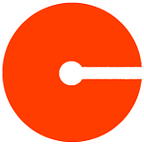Getting from Idea to ready-made product isn’t a new challenge at all. But, what we’ve experienced ourselves is that cutting edge technology is making it easier than ever. And most surprising to us is that it is not the machines that are the limiting factor. Of course there are many problems to solve but they have mostly to do with OEMs and machine manufacturers limitations than the machine itself. Neither it is so much that we don’t have the manufacturing experts, the craftspeople and engineers that are on the pulse of manufacturability, material science and know-how.
Gap between Idea and Realization
We found it is the gap between the one who gives birth to an idea, who knows what she wants but not how to and if it feasible. This is where technology has assisted us in the past already. CAD and its entire computer universe around assisting in the creation, modification, analysis, or optimization of design like CAM, MDA, EDA,… They all assist engineers and designers bringing intangible ideas to tangible physical objects. They all made manufacturing much easier for us.
But the real gap is when not a trained professional is involved. When you include someone in the process; whenever an inside or outside customer, a professional or a consumer brings valuable input to the table you want to speak a common language.
Customer Inclusion in Product Design
With the empowered customer and the already capable manufacturing machines the ones giving birth to an idea, often are not a trained product designer, engineer, or machinist. Customers, whether consumers or professionals, and especially the emerging prosumers, they all want to get exactly what they want. Resistance might often be observed from the professionals: “An engineer or scientist may find the idea of including customer input in product design rather unusual” states Swamidass (2016). But whoever is in the handcrafted, made-to-order, and engineering-to-order business knows that customer input is daily business. It even is a competitive advantage because if the customers tells us we do know what exactly they want and need. Now it just becomes a question if you are able and if you want to produce it.
It is a competitive advantage if we know where we deliver value to our customers.
And their input is worth one’s salt as they tell you exactly what they value. And, if they get what they value, what gives meaning to them, and what gets the job done for them, then you have truly happy customers. And you yourself know what a happy customer means for business.
Solving for the Gap
The machines are mostly ready for digital fabrication, we control many of them with computers. The missing link is from customer intent to manufacturability — from what a customer thinks, from a customers idea — to the machine readable input: A UX for production, an UI for manufacturing machines, a human production interface… Once we get the idea from your brain to machine readable data we have won.
Now, it is interesting to mention that this idea of yours is probably very fuzzy. You probably don’t even know what exactly it is you want. You might think of a job that a product has to get done for you rather than of an object that is the solution. Most of the times you won’t have considered all the ins and outs and don’t want to get bogged down in details. That is okay. We just want you to start describing what it is you want. With a picture of something similar, a story that you tell, a search term you, some measurements,… Based on this input and iterating feedback loop you design your product based on provided customizable design elements. Those customizable design elements are the direct brainchild of the community of product designers, engineers, enthusiasts. Their definition is product of a swarm intelligence. The customizer an emergence from the community of products.
Communities of Products
A community of product is a group of people that has formed itself around a product. Creators who create the products and customers, people for whom a product gets a job done.
Professionals in the made-to-order, built-to-order, configured-to-order, and even the engineer-to-order ha realized that offering a standard product is not phonemically and certainly not a standard product already made. Whenever there needs to be some form of customer input before the product is finalized a communication gap between professional and customer has to be bridged. Product configurators that let you choose from existing options get more and more popular. They provide a new kind of self-serving customization.
Customization Technology as Communication
Beyond the configuration from choosing of existing options Coshape Customization Technology can help all the way to engineering-to-order dimensions, where a product has not even started to be made and only the raw materials (like wood for a house, window, or table; or precious metals for a wedding ring;…) are in stock.
Whenever customer input is essential it is where the expertise of the Communities of Products play a decisive role. It is them who guide the communication — a communication between idea and manufacturing. We from Coshape provide that link in-between, that platform for communication. So one gets from a digital representation of a product (as CAD file, a description of how to make it, a BOM,….) to start making it — either yourself, by a craftsperson, by a machine, etc. Customization is the ultimate Pull.
